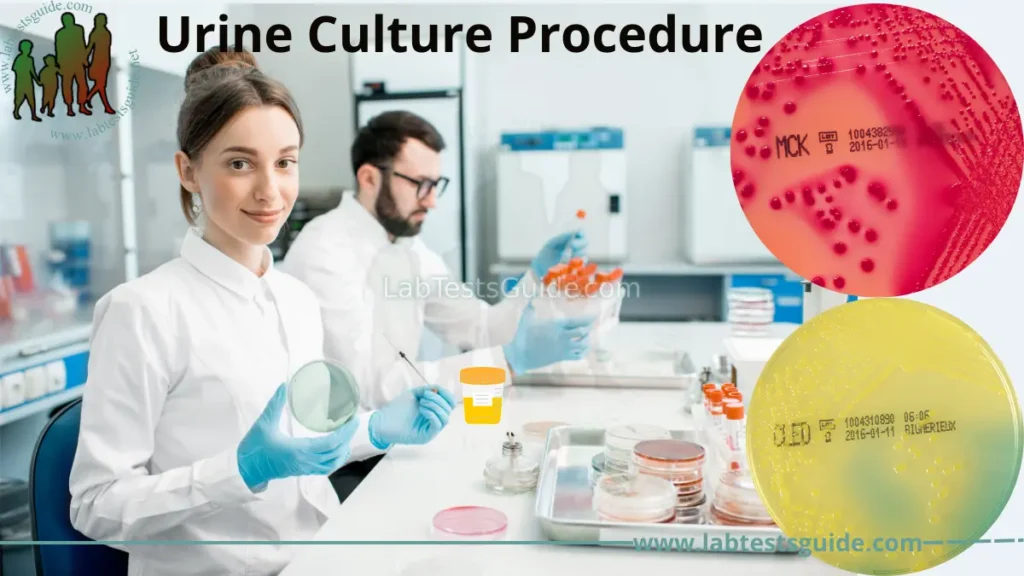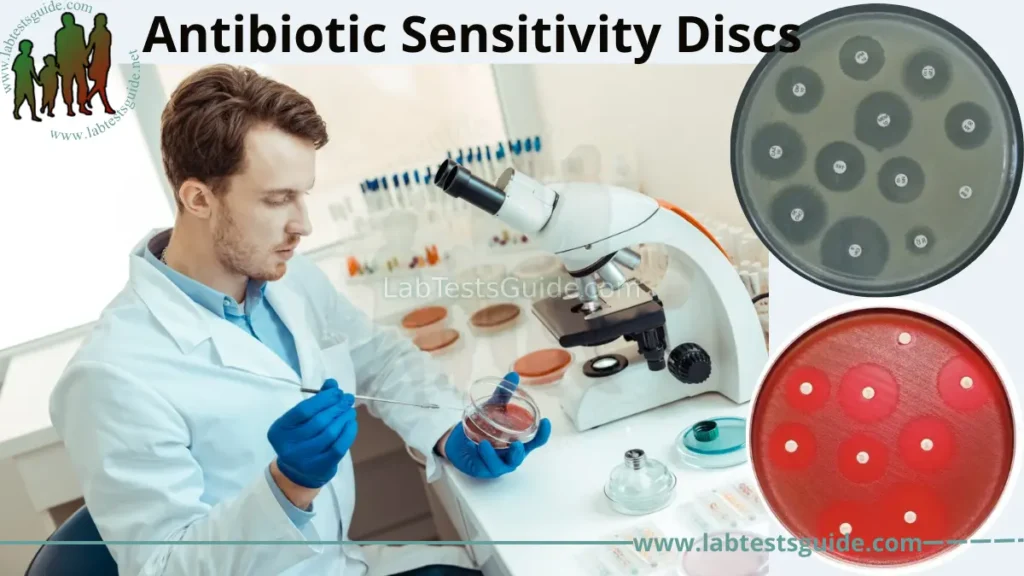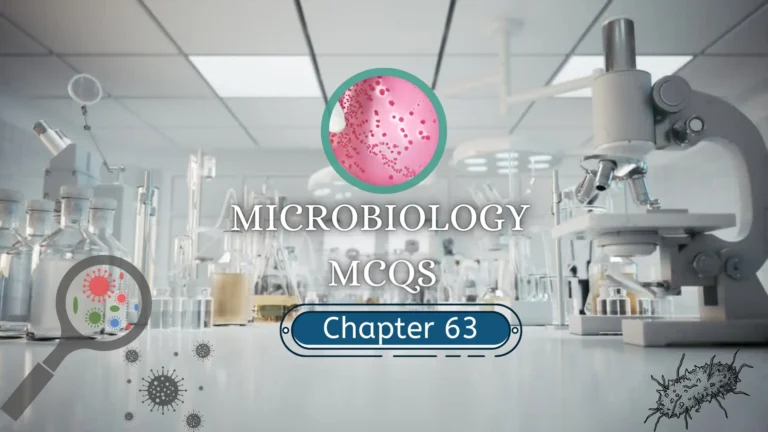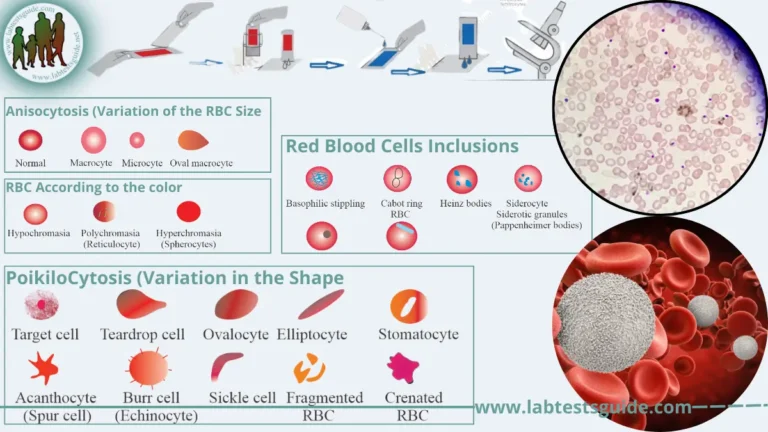A Comprehensive Guide to Urine Culture Processing and Interpretation for Laboratory Technicians
Urine cultures are critical for diagnosing urinary tract infections (UTIs) and guiding effective treatment. This article synthesizes key protocols, challenges, and best practices for laboratory technicians and technologists, based on current guidelines and evidence-based methods.

Specimen Collection and Handling:
Proper collection is paramount to avoid contamination and ensure accurate results:
- Clean-Catch Midstream Urine:
- Instruct patients (especially women) to clean the periurethral area thoroughly and discard the initial urine stream.
- Use sterile containers; avoid contact with skin or clothing.
- Pediatric Populations:
- Bagged urine: Suitable for urinalysis but unreliable for culture due to contamination. Confirm positive results with suprapubic aspiration (SPA) or catheterization.
- SPA or catheterization: Gold standards for infants <2 years. Colony count thresholds:
- SPA: >100 CFU/mL (gram-negative rods)
- Catheterization: >50,000 CFU/mL
- Indwelling Catheters:
- Collect via port after ethanol disinfection. Discard initial 15–30 mL.
- Reject catheter tips or bag urine for culture.
Transport & Storage:
- Process within 2–4 hours. Refrigerate (≤24 hours) or use boric acid preservative (avoid if leukocyte esterase testing is needed).
| Term | Definition |
|---|---|
| Bacteriuria | Presence of bacteria in urine (>10⁵ CFU/mL in voided specimens). |
| Cystitis | Bladder inflammation, typically causing dysuria, urgency, and frequency. |
| Pyuria | >5 WBCs/hpf in urine; correlates with infection but may be absent in Proteus or neutropenia. |
| Urosepsis | Systemic infection originating from a UTI, often with bacteremia. |
| Asymptomatic Bacteriuria | ≥10⁵ CFU/mL without symptoms; requires treatment in pregnancy. |
| Complicated UTI | UTI with structural/functional urinary tract abnormalities, diabetes, or immunosuppression. |
Culture Techniques and Media:
- Calibrated-Loop Method:
- Use 0.01 mL (10 µL) or 0.001 mL (1 µL) loops for semiquantitative plating.
- Key thresholds:
- Significant bacteriuria: ≥10⁵ CFU/mL for voided urine; ≥10³ CFU/mL for catheterized specimens.
- Calibrate loops monthly using Evans blue dye to ensure accuracy (±20% error tolerance).
- Media Selection:
- Blood Agar (5% SBA): For total colony count and gram-positive organisms.
- MacConkey/EMB: Isolate gram-negative rods (e.g., E. coli, Klebsiella).
- CLED Agar: Prevents Proteus swarming and supports lactose fermenters.
- CNA/PEA: Select for gram-positive cocci (e.g., Enterococcus, Staphylococcus).
- Automated Screening:
- Bioluminescence (ATP detection) and photometry systems lack sensitivity for low-grade infections.
- Particle filtration (e.g., Bac-T-Screen) is sensitive but prone to false positives.

Protocol for Workup of Urine Cultures:
| Specimen Type | Inoculation | Workup Criteria | Reporting |
|---|---|---|---|
| Voided Midstream | 0.001 mL loop on BAP, MAC/EMB | ≥10⁵ CFU/mL: ID + AST Mixed flora: Report contamination | “Mixed microbiota; recollect if symptomatic.” |
| Catheterized | 0.001 mL loop on BAP, CNA, MAC/EMB | ≥10⁴ CFU/mL: ID + AST ≥3 isolates: Contamination | “Polymicrobial growth; clinical correlation advised.” |
| Suprapubic Aspiration | 0.01 mL loop on BAP, CNA, MAC/EMB | ≥100 CFU/mL (gram-negative rods): Report Any growth in symptomatic patients | “Pathogen identified; correlate clinically.” |
| Pediatric (SPA) | 0.01 mL loop on BAP, CHOC for fastidious | ≥100 CFU/mL (gram-negative rods): Urgent report | “Significant growth; recommend treatment.” |
Key:
- BAP: Blood agar plate.
- MAC/EMB: MacConkey/Eosin Methylene Blue agar.
- CNA: Columbia colistin-nalidixic acid agar.
- CHOC: Chocolate agar.
Interpretation Guidelines:
Key Criteria:
| Collection Method | Significant CFU/mL | Probability of Infection |
|---|---|---|
| Suprapubic Aspiration (SPA) | ≥100 (gram-negative rods) | >99% |
| Catheterization | ≥50,000 | 95% |
| Clean-Catch (Women) | ≥10⁵ (1 specimen) | 80% |
- Mixed Flora: Report as contamination if ≥3 organisms or skin/vaginal commensals dominate.
- Pyuria: >5 WBCs/hpf correlates with infection but may be absent in Proteus UTIs (alkaline pH lyses leukocytes).
Special Populations:
- Pregnancy: Screen for asymptomatic bacteriuria (≥10⁵ CFU/mL at 12–16 weeks). Treat Group B Streptococcus to prevent neonatal sepsis.
- Elderly: Higher asymptomatic bacteriuria rates; correlate with symptoms before reporting.
- Catheter-Associated UTIs: Treat only if symptomatic (≥10³ CFU/mL + symptoms).

Urinary Microbiota:
| Category | Organisms | Clinical Relevance |
|---|---|---|
| Urogenital Microbiota | Lactobacillus spp., viridans streptococci, diphtheroids, Neisseria spp., anaerobes | Typically contaminants; report only if dominant (>10× other flora). |
| Skin Microbiota | Coagulase-negative staphylococci, Staphylococcus epidermidis, diphtheroids | Report as contaminants unless predominant in catheterized/immunocompromised patients. |
| Uropathogens | Escherichia coli, Klebsiella spp., Enterococcus spp., Pseudomonas spp., Proteus spp. | Always report and perform antimicrobial susceptibility testing (AST). |
| Yeasts | Candida albicans, Candida glabrata | Report species if pure; consider colonization vs. infection. |
| Fastidious Pathogens | Corynebacterium urealyticum, Aerococcus urinae, Gardnerella vaginalis | Require extended incubation (48–72 h) or special media. |
Pathogen Identification and Reporting
- Common Pathogens:
- E. coli (80–90% of outpatient UTIs), Klebsiella, Enterococcus, Pseudomonas, Staphylococcus saprophyticus (young women).
- Contaminants:
- Lactobacillus, Corynebacterium, coagulase-negative staphylococci (unless predominant in immunocompromised patients).
- Uncommon Pathogens:
- Aerococcus urinae (elderly males), Corynebacterium urealyticum (urease-positive, alkaline urine), Candida (catheterized patients).
Reporting Tips:
- Add comments for ambiguous results:
- “No urinalysis performed; clinical correlation advised.”
- “Mixed skin flora; suggest recollection if clinically indicated.”
- For sterile pyuria: Consider Chlamydia, TB, or prior antibiotic use.
Bacteria Isolation in Urine Culture:
| Bacteria Name | Agar Media | Key Identification Features | Minimal Testing Required |
|---|---|---|---|
| Escherichia coli | MAC, EMB, CLED, BAP | – Gram-negative rods – Lactose fermenter (pink colonies on MAC/EMB) – Indole-positive | – Gram stain – Lactose fermentation – Indole test |
| Klebsiella pneumoniae | MAC, EMB, CLED, BAP | – Gram-negative rods – Lactose fermenter (mucoid colonies) – Urease-positive | – Gram stain – Lactose fermentation – Urease test |
| Proteus mirabilis | MAC, BAP, CLED | – Gram-negative rods – Swarming motility – Urease-positive – H₂S production (TSI agar) | – Gram stain – Urease test – Swarming observation |
| Enterococcus spp. | CNA, BAP | – Gram-positive cocci in chains – Catalase-negative – PYR-positive | – Gram stain – Catalase test – PYR test |
| Pseudomonas aeruginosa | MAC, BAP | – Gram-negative rods – Non-lactose fermenter (green pigment on MAC) – Oxidase-positive – Fruity odor | – Gram stain – Oxidase test – Odor observation |
| Staphylococcus saprophyticus | CNA, BAP | – Gram-positive cocci in clusters – Catalase-positive – Novobiocin-resistant | – Gram stain – Catalase test – Novobiocin susceptibility |
| Candida albicans | SDA, CHROMagar™ | – Yeast (budding cells) – Germ tube-positive – Green colonies on CHROMagar™ | – Gram stain/KOH prep – Germ tube test – CHROMagar™ |
| Streptococcus agalactiae (GBS) | CNA, BAP | – Gram-positive cocci in chains – Catalase-negative – CAMP test-positive | – Gram stain – CAMP test – Hippurate hydrolysis |
| Corynebacterium urealyticum | BAP, CLED | – Gram-positive rods (palisades) – Urease-positive – Alkaline urine | – Gram stain – Urease test – Extended incubation (48–72 h) |
| Aerococcus urinae | BAP, CNA | – Gram-positive cocci in tetrads/clusters – PYR-negative – Alpha-hemolytic | – Gram stain – PYR test – LAP (leucine aminopeptidase) test |

Minimal Testing for Reporting Isolates:
| Organism | Minimal Testing | Definitive ID Required? |
|---|---|---|
| Escherichia coli | Lactose fermentation, indole-positive | No |
| Enterococcus spp. | Catalase-negative, PYR-positive | No |
| Staphylococcus aureus | Catalase-positive, coagulase-positive | No |
| Pseudomonas aeruginosa | Oxidase-positive, grape-like odor | No |
| Candida albicans | Germ tube test, CHROMagar™ (green colonies) | Yes (species-level) |
| Corynebacterium urealyticum | Urease-positive, gram-positive rods | Yes |
Tables by Agar Type
1. Blood Agar (BAP)
| Pathogen | Colony Appearance | Hemolysis | Key Identifier |
|---|---|---|---|
| Escherichia coli | Grayish-white, smooth, convex, shiny | Beta-hemolytic | Musty odor, Gram-negative rods, indole-positive. |
| Klebsiella pneumoniae | Large, mucoid, gray-white | Gamma-hemolytic | Mucoid capsule, urease-positive, lactose-fermenting. |
| Proteus mirabilis | Swarming motility, translucent | Gamma-hemolytic | Swarming pattern, “fishy” odor, urease-positive. |
| Enterococcus spp. | Small, white, non-hemolytic | Gamma-hemolytic | Gram-positive cocci in chains, catalase-negative, PYR-positive. |
| Pseudomonas aeruginosa | Flat, greenish (pyocyanin pigment) | Beta-hemolytic | Grape-like odor, oxidase-positive, Gram-negative rods. |
| Staphylococcus saprophyticus | White, opaque, round | Gamma-hemolytic | Gram-positive cocci in clusters, catalase-positive, novobiocin-resistant. |
| Candida albicans | Creamy, white, smooth | Non-hemolytic | Yeast cells (budding), germ tube-positive. |
| Streptococcus agalactiae (GBS) | Small, white, translucent | Beta-hemolytic | Gram-positive cocci in chains, CAMP test-positive. |
| Corynebacterium urealyticum | Small, white, dry | Gamma-hemolytic | Gram-positive rods in palisades, urease-positive, alkaline urine. |
| Aerococcus urinae | Small, alpha-hemolytic, greenish | Alpha-hemolytic | Gram-positive cocci in tetrads, PYR-negative. |
2. MacConkey Agar (MAC)
| Pathogen | Colony Appearance | Lactose Fermentation | Key Identifier |
|---|---|---|---|
| Escherichia coli | Pink, flat, dry | Yes (LF) | Indole-positive, oxidase-negative. |
| Klebsiella pneumoniae | Pink, mucoid, convex | Yes (LF) | Mucoid capsule, urease-positive. |
| Proteus mirabilis | Colorless, swarming | No (NLF) | Swarming motility, urease-positive, H₂S production. |
| Pseudomonas aeruginosa | Colorless, flat, green pigment | No (NLF) | Oxidase-positive, fruity odor. |
| Enterococcus spp. | No growth (gram-positive) | N/A | Not applicable; MacConkey selects for gram-negative bacteria. |
| Staphylococcus saprophyticus | No growth (gram-positive) | N/A | Not applicable. |
| Candida albicans | No growth (fungal) | N/A | Requires fungal-specific media (e.g., CHROMagar™). |
3. Eosin Methylene Blue Agar (EMB)
| Pathogen | Colony Appearance | Lactose Fermentation | Key Identifier |
|---|---|---|---|
| Escherichia coli | Metallic green sheen | Yes (LF) | Indole-positive, oxidase-negative. |
| Klebsiella pneumoniae | Pink, mucoid | Yes (LF) | Mucoid colonies, urease-positive. |
| Proteus mirabilis | Colorless | No (NLF) | Swarming motility, urease-positive. |
| Pseudomonas aeruginosa | Colorless, flat | No (NLF) | Oxidase-positive, green pigment (pyocyanin). |
4. CLED Agar (Cystine-Lactose-Electrolyte-Deficient)
| Pathogen | Colony Appearance | Lactose Fermentation | Key Identifier |
|---|---|---|---|
| Escherichia coli | Yellow | Yes (LF) | Indole-positive, non-swarming. |
| Klebsiella pneumoniae | Yellow, mucoid | Yes (LF) | Mucoid colonies, urease-positive. |
| Proteus mirabilis | Blue (non-lactose fermenter) | No (NLF) | Swarming inhibited, urease-positive. |
| Pseudomonas aeruginosa | Green-blue | No (NLF) | Oxidase-positive, fruity odor. |
| Enterococcus spp. | Small, white | No (NLF) | Gram-positive cocci, catalase-negative. |
5. CNA Agar (Columbia Colistin-Nalidixic Acid)
| Pathogen | Colony Appearance | Hemolysis | Key Identifier |
|---|---|---|---|
| Enterococcus spp. | Small, white, non-hemolytic | Gamma-hemolytic | Gram-positive cocci in chains, PYR-positive. |
| Staphylococcus saprophyticus | White, opaque | Gamma-hemolytic | Catalase-positive, novobiocin-resistant. |
| Streptococcus agalactiae (GBS) | Small, translucent, beta-hemolytic | Beta-hemolytic | CAMP test-positive, hippurate hydrolysis. |
6. CHROMagar™
| Pathogen | Colony Appearance | Key Identifier |
|---|---|---|
| Escherichia coli | Pink | Lactose-fermenting, indole-positive. |
| Klebsiella pneumoniae | Blue | Mucoid colonies, urease-positive. |
| Candida albicans | Green | Germ tube-positive, chlamydospore formation. |
| Enterococcus spp. | No growth | Not applicable; CHROMagar™ targets gram-negative bacteria and yeast. |
Tables by Pathogen
1. Escherichia coli
| Agar Type | Colony Appearance | Key Feature |
|---|---|---|
| Blood Agar (BAP) | Grayish-white, beta-hemolytic | Musty odor, Gram-negative rods. |
| MacConkey Agar (MAC) | Pink, lactose-fermenting | Indole-positive. |
| EMB Agar | Metallic green sheen | Lactose-fermenting. |
| CLED Agar | Yellow | Non-swarming, lactose-fermenting. |
2. Pseudomonas aeruginosa
| Agar Type | Colony Appearance | Key Feature |
|---|---|---|
| Blood Agar (BAP) | Flat, green pigment (pyocyanin) | Grape-like odor, oxidase-positive. |
| MacConkey Agar (MAC) | Colorless, non-lactose fermenting | Oxidase-positive, fruity odor. |
| EMB Agar | Colorless | Non-lactose fermenting. |
3. Proteus mirabilis
| Agar Type | Colony Appearance | Key Feature |
|---|---|---|
| Blood Agar (BAP) | Swarming motility, translucent | Urease-positive, “fishy” odor. |
| MacConkey Agar (MAC) | Colorless, non-lactose fermenting | Swarming inhibited. |
| CLED Agar | Blue (non-lactose fermenter) | Urease-positive. |
4. Enterococcus spp.
| Agar Type | Colony Appearance | Key Feature |
|---|---|---|
| Blood Agar (BAP) | Small, white, gamma-hemolytic | Catalase-negative, PYR-positive. |
| CNA Agar | Small, white, gamma-hemolytic | Gram-positive cocci in chains. |
Key Notes:
- Confirm identification with biochemical tests (e.g., API, MALDI-TOF) or molecular methods.
- Hemolysis patterns may vary by strain (e.g., some E. coli strains are gamma-hemolytic).
Quality Control and Troubleshooting:
- Rejection Criteria:
- Specimens >2 hours unrefrigerated, Foley catheter tips, or bag urine.
- Antimicrobial Inhibition: Report “Colony count unreliable due to antimicrobial inhibition” if growth occurs only in diluted areas.
- Calibration: Validate loops monthly to avoid over/underestimation of CFU/mL.
Communication with Clinicians:
Effective collaboration prevents mismanagement:
- Clarify collection method (e.g., bagged vs. catheterized).
- Flag contaminants in pediatric or geriatric specimens.
- Highlight fastidious organisms (e.g., C. urealyticum) requiring extended incubation (48 hours).
Biochemical Tests for Common Urinary Pathogens:
| Pathogen | Key Biochemical Tests | Expected Results | Key Notes |
|---|---|---|---|
| Escherichia coli | – Indole test – Lactose fermentation (MAC/EMB) – IMViC (Indole, MR, VP, Citrate) | Indole (+) Lactose (+) IMViC: + + – – | Beta-hemolytic on BAP. Most common UTI pathogen. |
| Klebsiella pneumoniae | – Urease test – Lactose fermentation (MAC/EMB) – IMViC | Urease (+) Lactose (+) IMViC: – – + + | Mucoid colonies; often hospital-acquired. |
| Proteus mirabilis | – Urease test – Swarming motility (BAP) – H₂S production (TSI) – Phenylalanine deaminase | Urease (+) Swarming (+) H₂S (+) PAD (+) | Alkaline urine; associated with kidney stones. |
| Pseudomonas aeruginosa | – Oxidase test – Cetrimide test – Growth at 42°C | Oxidase (+) Cetrimide (+) Growth at 42°C (+) | Pyocyanin pigment (green); antibiotic resistance common. |
| Enterococcus spp. | – PYR test – Bile esculin test – Salt tolerance (6.5% NaCl) | PYR (+) Bile esculin (+) Salt tolerance (+) | Catalase-negative; vancomycin-resistant strains (VRE) require special reporting. |
| Staphylococcus saprophyticus | – Catalase test – Coagulase test – Novobiocin susceptibility | Catalase (+) Coagulase (–) Novobiocin-resistant | Common in young women; adheres to uroepithelial cells. |
| Candida albicans | – Germ tube test – CHROMagar™ (green colonies) – Urease test | Germ tube (+) Green colonies Urease (–) | Budding yeast; colonization common in catheterized patients. |
| Streptococcus agalactiae (GBS) | – CAMP test – Hippurate hydrolysis – Gram stain | CAMP (+) Hippurate (+) Gram-positive cocci in chains | Beta-hemolytic; critical to report in pregnancy. |
| Corynebacterium urealyticum | – Urease test – Catalase test – Gram stain | Urease (+) Catalase (+) Gram-positive rods (palisades) | Alkaline urine; associated with encrusted catheters. |
| Aerococcus urinae | – PYR test – LAP test – Gram stain | PYR (–) LAP (+) Gram-positive cocci (tetrads/clusters) | Alpha-hemolytic; resembles enterococci but PYR-negative. |
Notes:
- Indole Test: Differentiates E. coli (positive) from Klebsiella (negative).
- Urease Test: Identifies Proteus and Corynebacterium urealyticum (urease-positive).
- Oxidase Test: Critical for Pseudomonas aeruginosa (positive) vs. Enterobacteriaceae (negative).
- CAMP Test: Confirms Streptococcus agalactiae (GBS).
- Germ Tube Test: Rapid identification of Candida albicans.
List of Abbreviations with Full Forms:
- AST: Antimicrobial Susceptibility Testing
- ATP: Adenosine Triphosphate
- BAP: Blood Agar Plate
- CAMP: Christie-Atkins-Munch-Petersen test (enhanced hemolysis near Staphylococcus aureus).
- CFU: Colony-Forming Units
- CHOC: Chocolate Agar
- CNA: Columbia Colistin-Nalidixic Acid Agar
- CLED: Cystine-Lactose-Electrolyte-Deficient Agar
- EMB: Eosin Methylene Blue Agar
- hpf: High-Power Field
- IMViC: Indole (+), Methyl Red (+), Voges-Proskauer (–), Citrate (–) for E. coli.
- LF: Lactose-fermenting.
- MAC: MacConkey Agar
- mL: Milliliter
- NLF: Non-lactose-fermenting.
- PAD: Phenylalanine Deaminase.
- PEA: Phenylethyl Alcohol Agar
- PYR: Pyrrolidonyl Arylamidase Test
- rpm: Revolutions Per Minute
- SPA: Suprapubic Aspiration
- TB: Tuberculosis
- TSI: Triple Sugar Iron agar.
- UTI: Urinary Tract Infection
- VRE: Vancomycin-Resistant Enterococci.
- WBC: White Blood Cells
- µL: Microliter
References:
- American Academy of Pediatrics (2011) guidelines.
- College of American Pathologists (CAP) Q-Probes Study (2008).
- MLO-May 2010: Urine Cultures: Contaminants, Skin Flora, or?
Possible References Used






